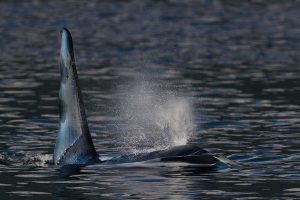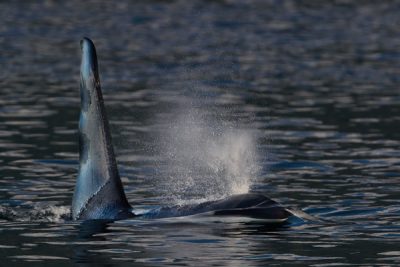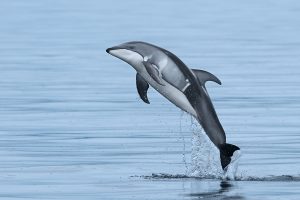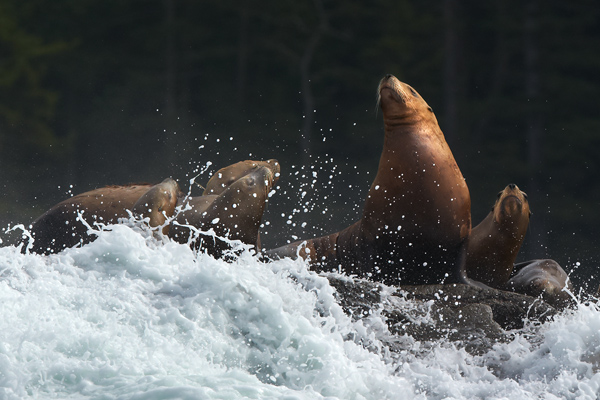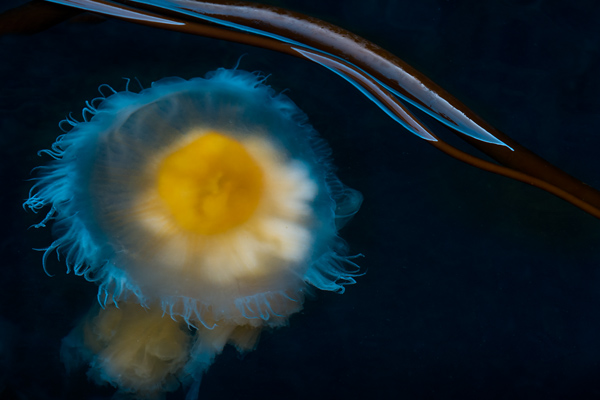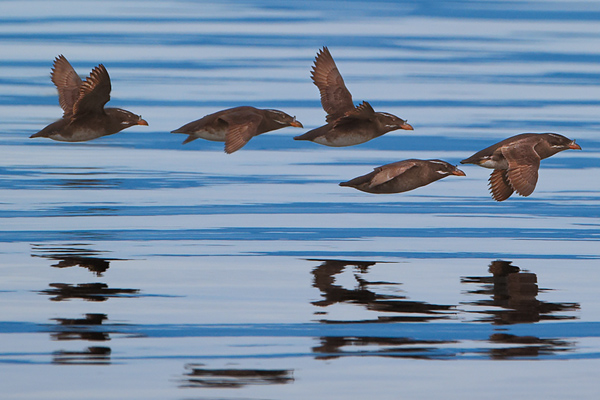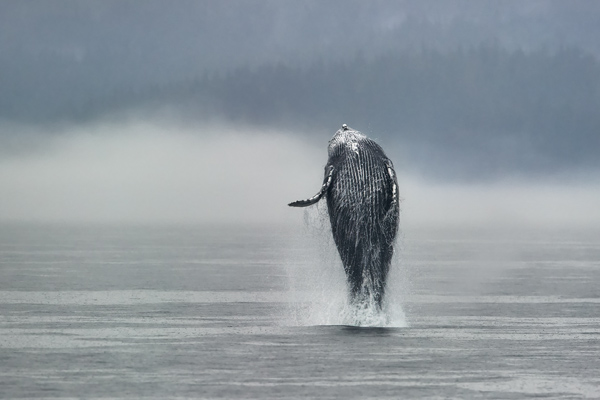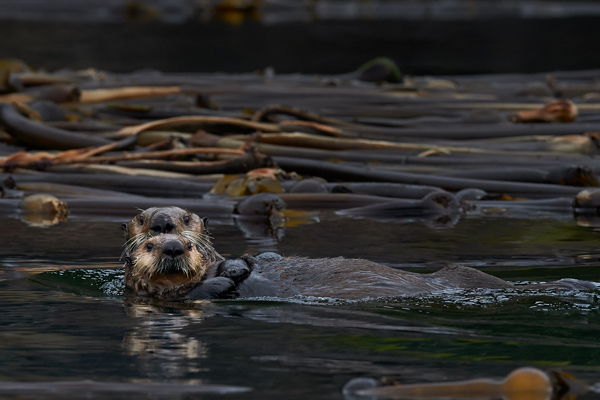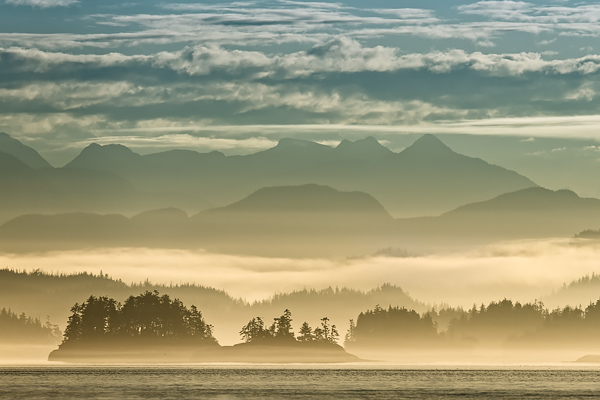The Marine Mammal Explorer
Join us aboard the beautiful Afterglow I as we travel through the fertile waters off the northeastern tip of Vancouver Island. Here the Orca and other aquatic wildlife viewing is the most consistent and spectacular on the BC coast. In late summer an incredibly rich and diverse collection of marine mammals are attracted by the nutrients that the Pacific Ocean delivers to the numerous channels and inlets of Johnstone Strait, the Broughton Archipelago and Queen Charlotte Strait. Orcas, dolphins, porpoises, seals and sea lions assemble to feed on the Pacific Salmon as they return to the rivers to spawn. Both Humpback and Grey whales also feed in these waters and sea otters can be found a little further offshore. Our small group and floating accommodations permit us to follow the wildlife and view and photograph them under the most favourable conditions. Add in stunning scenery – from windswept exposed outer coastal shores through to quiet secluded anchorages – and the Marine Mammal Explorer trip is nothing less than an absolutely unforgettable experience.
Witness the rich gathering of marine mammals and sea birds along the coastline of Northern Vancouver Island
2024 Schedule: The Marine Mammal Explorer
Looking Ahead: The Marine Mammal Explorer 2025
- Not offered in 2025
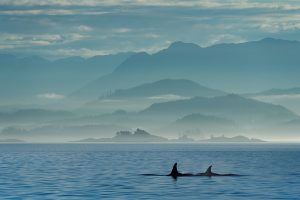
- Not offered in 2025
Not offered in 2025
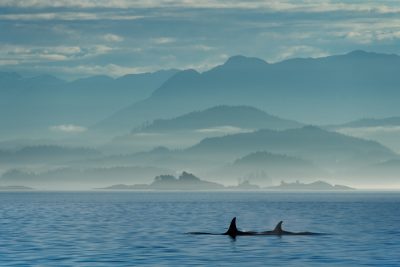
Not offered in 2025
Background Information: Orcas, Humpacks and More!
Johnstone Strait is a deep and narrow glacier-carved passage located between the east coast of Vancouver Island and the British Columbia mainland. Bordered by Queen Charlotte Strait to the west and Discovery Passage to the east, gentle conditions prevail in the sheltered waters of Johnstone Strait and the nearby Broughton Archipelago.
Nutrient rich water from the deep, cold Pacific is funnelled into the gentler waters of northern Johnstone Strait with each tide. In late summer salmon return to the region to spawn and the largest resident pod of killer whales in the world, with a population of approximately 200 whales, congregates to feast. There is no better place to view these amazing marine mammals. In addition to the orcas, Johnstone Strait offers up a wide variety of other marine life, including Minke, humpback and grey whales, Pacific white sided dolphins, harbour porpoises, Dall’s porpoises, harbour seals, Steller sea lions and sea otters.
The Orca (Killer Whale)
The orca, or killer whale, is a toothed whale and is the largest member of the dolphin family. There are 3 distinct populations of these warm-blooded, air breathing mammals: Resident Killer Whales, Biggs Killer Whales (transients) and Off-shore Killer Whales. Some biologists believe these populations actually represent 3 distinct, non-interbreeding species, but others challenge this assertion. Regardless, the main characteristics which set each of these populations apart are social behaviour, physical appearance, preferred food and vocal dialects. One of the best locations for viewing resident killer whales is off Vancouver Island in British Columbia.
Killer whales (orcas) are easily recognized due to their striking black and white coloration and a sleek, streamlined body shape that is tapered at both ends. The rounded pectoral flippers are used mainly to steer and, with the help of the flukes, to stop. The dorsal fin acts as a keel and helps to stabilize the killer whale and in males the dorsal fin is the largest of any of the cetaceans. The males or bulls start maturing at 14 years and reach full physical maturity at about 20 years. Most males reach a length of 8-9 metres and have a lifespan of between 40-60 years. The females or cows average about seven m in length and reach sexual maturity at 14-15 years and have a lifespan of 60-80 years. The gestation period is 16-17 months and a single calf is usually born. Newborn killer whales nurse for at least one year and mortality rates of calves is quite high.
The resident killer whales of the Johnstone Strait area eat predominantly fish (Chinook salmon being their preferred food but also lingcod, halibut, greenling and various small flatfish). Although they are often seen in the vicinity of other marine mammals they usually ignore them. In contrast, Biggs killer whales feed almost exclusively on marine mammals and seabirds.
Killer Whales often hunt cooperatively in groups (known as pods) for food. They work together to encircle and herd prey into a small area before attacking. Adult killer whales must eat approximately 3-4% of the body weight in food per day.
Resident orcas live and travel in pods organized along lines of maternal relatedness ranging in size from 3-50 individuals.
Orcas spend much of their time feeding or searching for food. They are deemed to be travelling when they are moving consistently in one direction in a relatively tight formation. They could be moving from one feeding spot to another or simply transiting an area. Resting is typically done after foraging and the whales group together, and dive and surface as a cohesive unit. They slow down or come to a complete stop and usually become quiet. Social behaviour among killer whales includes a wide variety of activities including breaching, spy-hopping, tail slapping, beach rubbing and flipper slapping.
Orcas can also be distinguished by the kinds of underwater communication sounds they produce – squeals, squawks and screams are used for social communication within and between groups. Studies have shown that these vocalizations differ between populations and pods, and can even be used by the whales to distinguish between individuals. Orcas also have acute hearing and vision both in and out of the water. Echolocation enables them to locate and discriminate objects by projecting high-frequency sound waves and listening for echoes. Orcas echolocate by producing clicking sounds and then receiving and interpreting the resulting echo.
Humpback Whales
Humpback Whales are also quite abundant in the nutrient rich waters around Johnstone Strait. Humpback whales are baleen whales that seasonally feed on tiny crustaceans, plankton and small fish. They are gulpers and therefore look for concentrated masses of prey which they can gulp in huge mouthfuls. On average a humpback whale will eat between 4000-5000 pounds of plankton, krill and small schooling fish each day in the cold waters of the north Pacific. Pacific humpbacks migrate south in the winter to give birth in the warm waters of Mexico and Hawaii.
Humpback Whales are well known for breaching and their complex songs. The name humpback whale describes the motion it makes as it arches its back out of the water then shows off its magnificent tail flukes in preparation for a dive.
Humpback Whales grow to an adult size of 17 m and weigh 40,000 kg. They can live for 45-50 years. They typically live alone or in transient small groups which come together for cooperative feeding. When the waters are super rich in nutrients many humpbacks can be seen together.
Our Marine Mammal Explorer trip gives a small number of visitors the unique privilege of observing orcas, humpbacks and many other species of aquatic mammals and marine birds over a number of days while staying on our floating base-camp – the beautiful Ocean Light II sailboat. There’s no better, or more comfortable, way to observe and photograph these spectacular animals!
FAQs about our Marine Mammal Explorer
All of our tours offer excellent photographic opportunities. Our photography tours are very similar to our standard tours but to accommodate the additional gear of photographers – and to maximize shooting angles from our inflatable boat – they are limited to fewer participants (normally 6 clients plus the photography guide).
Yes, there are drying lockers on the aft deck where we hang all the wet gear each night to dry. In order to keep the inside of the boat dry and comfortable we do not bring wet gear into the main living area or cabins. Cotton clothing is not recommended as it takes a long time to dry.
There are strict guidelines for boat traffic around orca whales and other marine mammals. We must adhere to these distances as best we can. However, at times the whales can and will approach us. We will also have a hydrophone on board that will allow us to listen to the whales when they’re close or far away.
No, there are not opportunities for kayaking on all our trips. Our Gwaii Haanas trips offer the best kayaking experiences as there are many different bays and coastlines waiting to be explored by kayak. Our North Coast Explorer trips also offer sheltered kayaking while the Afterglow I is at anchor.
Yes. In Gwaii Haanas and North Coast Explorer we will try fishing for halibut, lingcod, and salmon as well as crabs, when possible. On our Khutzeymateen and Great Bear Rainforest trips we will try fishing for Dungeness crabs and, if opportunities present themselves, for salmon and halibut. If you want to participate in fishing you must purchase a saltwater fishing license before you arrive at the boat.
Hiking boots are not necessary on any of our trips – they are heavy and add to your overall weight. Every time you leave the Afterglow I and get into the zodiac to go ashore you will wear your rubber boots. For most people on the short distances we walk, rubber boots work well. When you are on the Afterglow I you need comfortable shoes with a non-marking sole to wear both inside and outside.
Yes, we HIGHLY recommend that you take trip medical insurance, trip cancellation insurance and trip evacuation insurance. Ask your insurance agent or your travel agent for options available to you. Your current policies may have a travel clause that covers you. Read the fine print to see what your coverage is in BC as a resident or non-resident. Thoroughly review the Ocean Light Adventures cancellation and refund policy on the website before you book your trip.
Yes, we can accommodate many dietary restrictions as long as we know about it in advance. We strive to serve healthy organic food, seafood fresh from the ocean (whenever possible), homemade soups, breads, salads and baked goods. We can take care of most of your food allergies, intolerances, likes or dislikes. If your needs are great, the cook will do their best to accommodate but be warned that the cook is just one person and serves a group meal that can be adapted slightly to meet the needs of individuals. The cook can not make 8 individual meals. If your dietary needs are many, this may not be the trip for you. Please contact us in advance of booking to discuss.
Please do not bring a tripod on our Khutzeymateen trips, there will be no opportunity to use it as all shooting is done from the inflatable and it is too heavy to bring on the float plane. On all other trips, you can bring a tripod and it may be useful in certain situations. Note that on many of our trips we follow the bears’ daily activities and therefore move about quite a lot- a beanbag can be useful when shooting from the zodiac. On the Great Bear Rainforest trips, we utilize bear viewing stands on the edge of the river and tripods will be useful. On the North Coast Explorer trip it is good to have a tripod to set up on the deck of the Afterglow I to photograph the various marine mammals.
Yes, the boat has a number of regular household outlets for charging batteries. Other electrical appliances such as hair dryers can be used but may need the generator so check with the crew before using.
Yes, you can bring a laptop. The boat has an inverter with 120V AC power at all times. Remember we have strict weight limits on the float planes so choose your gear wisely.
Our absolute maximum group size is 9, however we prefer to run trips with 6-8. This small group size is favourable because it creates a more intimate setting and makes it easier to move as a group.
No, we do not charge a single supplement. However you will most likely have to share a cabin (two separate bunks) with another guest of the same gender, or you may be lucky and get a cabin to yourself, it all depends on the make-up of the other guests.
Ocean Light Adventures has been in operation on the BC Coast for over 30 years and our experience and expertise in the areas that we visit is unsurpassed. We keep our groups small and intimate so that we can move about in our wilderness settings more efficiently and safely. Our boat, the Afterglow I is a beautiful, spacious and comfortable yacht and it is expertly maintained and fully equipped. We have passionate, experienced, professional crew who will make sure your trip is an amazing one.


